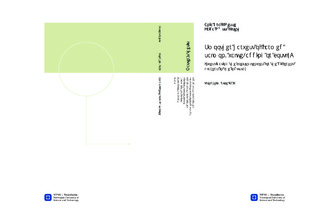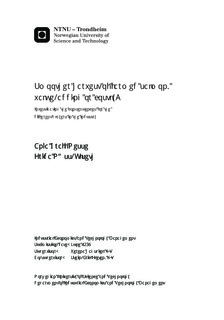| dc.description.abstract | About 60% of the world s salmon production is farmed. Supply of Atlantic salmon has more than doubled since 2000 with an annual growth of 7%. The EU and the US are by far the largest markets for Atlantic salmon. However, emerging markets are growing at significantly higher rates than these traditional markets, resulting in increasing demand for salmon. In Norway, the history of salmon farming is a history of an expansive and dynamic export industry. Since the beginning of salmon farming in the 1970 s, the salmon farming industry in Norway has moved from a local small-scale industry to a global multinational, billion-dollar industry exporting about 90-95% of its production to more than 100 countries all over the world. Historically, the spot price of salmon has been very volatile. The main cause for high volatility is inelastic short-run supply, which is a consequence of biological factors and a quite long production cycle. The biological nature of the production cycle implies that the desired output does not always meet its target, and therefore there will be periods of over- and undersupply, which cause salmon prices to fluctuate. Unstable supply and volatile salmon price has led to unpredictable cash flows and variability in profits for salmon farmers. Also, uneven supply of salmon from farmers have created distortions in the value chain and affected other agents in the salmon industry. In this master thesis a mathematical model for optimal harvest time of salmon given different harvest strategies is developed. The most important characteristic of the model is that it enables distribution of harvest over certain months in order to investigate the difference in profits between a non-smooth harvest profile and a smooth harvest profile. In order to ensure solvability, some simplifications of the model have been made, the most important being that seasonal variations are only incorporated in prices and not in production costs and fish growth. Also, an analysis of the salmon farming value chain is conducted based on interviews and information from agents in the industry.The goal of this thesis work is to investigate the hypothesis that a smoother harvest of salmon provides the salmon farming value chain with additional value. We have used the mathematical model to find the potential loss or benefit the farmer would face by implementing a smooth harvest strategy rather than harvesting only a few times each year. Then in order to investigate whether a smoother harvest of salmon is value-adding or costly, we have conducted an analysis of the salmon farming value chain. The analysis was performed through interviews with different agents in the value chain. We combine our model results and findings from our value chain analysis to decide if smoother harvest indeed generates additional value.Our findings show that with a smoother harvest of salmon, the salmon farmer loose approximately 9% of potential profits generated from its operations. Hence, a smoother harvest is costly for the salmon farmer viewed in isolation. Also, findings show that the biomass development in the sea is less fluctuating with a smoother harvest compared to a scenario when harvesting is performed only 2 times per year. Findings show that it is the processors in the value chain that would profit the most from a smoother harvest. Interestingly, results show that retail chains do not experience variations in supply of salmon, indicating that the Norwegian market for salmon are saturated before salmon is exported. Other interesting findings are the industry concern of high salmon prices and its consequences. We have found that high salmon prices may lead to international competition and higher cost levels, which make higher prices a threat to the industry in the future. Also, with the government not issuing more licenses in the near future, high salmon prices are expected to continue. Through a new regulation proposal, called rolling MAB, the government wants to facilitate a more market oriented production of salmon, and hence more stable supply. We have found that the main motivation behind a rolling MAB is to facilitate more value creation in terms of processing in coastal areas. | nb_NO |

